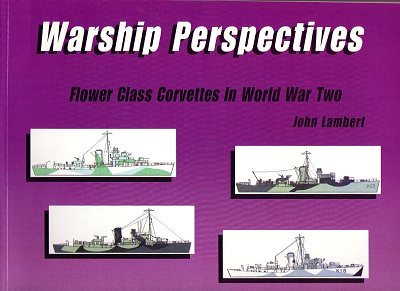 In the late 1930s, the Admiralty realized that the Royal Navy was
seriously short of small escort vessels for convoy duty in the event of war.
Several alternatives were considered, and it was decided to go with a vessel
based on an existing Whale Catcher/Trawler hull, with some improvements.
In the late 1930s, the Admiralty realized that the Royal Navy was
seriously short of small escort vessels for convoy duty in the event of war.
Several alternatives were considered, and it was decided to go with a vessel
based on an existing Whale Catcher/Trawler hull, with some improvements.
The corvette was 190 feet in length, and displaced about
950 tons. They were single screw vessels, with a maximum speed of about 16
knots. The Corvettes were built in the UK and in Canada, generally in smaller
yards that were not already engaged in war production. The early ships were all
named after flowers or flowering plants, hence the term “Flower Class”.
The Flowers were originally built to be coastal escorts.
As the war progressed, the demands on these little ships increased. Additional
ASW and AA weapons were added, with a corresponding increase in crew.
Necessities of war soon had these vessels escorting deep ocean convoys as well.
There were two basic types of Flower Class Corvette. The
original design was also known as the “short forecastle” corvette. The need for
improved sea-keeping in the North Atlantic led to a modified design, known as the
“long forecastle” flowers. (The Revell 1/72 scale kit is a long forecastle
ship.)
Corvettes were built in a number of different yards, with
a variety of weapons fits. Additionally, the weapons fitted to any specific
ship were changed as the war progressed. As the war progressed, and more
capable escorts became available, some of the Flowers were retrofitted for
minesweeping. This means there is a huge variety of ships to model.
John Lambert’s book is an excellent resource for the
modeler. I would consider it a must have for anyone looking to improve the
Revell HMCS Snowberry kit. The book has several pages of text at the front,
describing the evolution of the design. The back of the book lists all the
ships by name, with builder and hull number.
The book contains a wealth of detail. Most of the book is
devoted to pictures, equipment drawings, and sketches. There are hull lines for
both long and short forecastle hulls. The detailed drawings of the weapons and
other fittings all have scales provided.
The book also has a number of outboard profiles, showing a
variety of short and long forecastle ships. The drawings show the different
camouflage schemes worn by the ships. Twenty-four different ships are shown.
(The only ones in full color are the four on the cover.)
An additional bonus is found inside the back cover.
Included with the book is a large foldout out drawing, approximately 2x4 feet in
size. It has a full set of hull lines, and outboard profile, deck plan, and
details for the HMS Anemone, a long hull Flower modified with the addition of
minesweeping equipment.
This book is highly recommended, especially for builders
of the Revell 1/72 scale kit. There’s enough information in the book for
scratch-builders, or to complete a larger hull for a radio controlled model.
Review courtesy of me and my wallet.
If you would like your product reviewed fairly and quickly by a
site that has well over 175,000 visitors a month, please contact
me or see other details in the Note to
Contributors.
 In the late 1930s, the Admiralty realized that the Royal Navy was
seriously short of small escort vessels for convoy duty in the event of war.
Several alternatives were considered, and it was decided to go with a vessel
based on an existing Whale Catcher/Trawler hull, with some improvements.
In the late 1930s, the Admiralty realized that the Royal Navy was
seriously short of small escort vessels for convoy duty in the event of war.
Several alternatives were considered, and it was decided to go with a vessel
based on an existing Whale Catcher/Trawler hull, with some improvements.